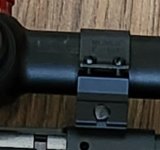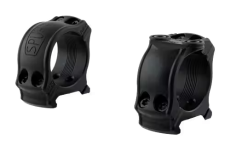There’s definitely a lot of marketing hype when it comes to scope rings, and I agree that the price disparity can be hard to justify. That said, the main difference between cheap and expensive rings comes down to consistency, durability, and alignment.
What You Pay For in Expensive Rings:
What You Pay For in Expensive Rings:
- Material & Machining Precision – Higher-end rings (Zeiss, Spuhr, Nightforce, Seekins, Badger, etc.) are precision-machined, often to tighter tolerances. This ensures better concentricity and alignment, meaning less stress on your scope tube and better tracking.
- Quality Control (QC) – More expensive brands generally have better QC, reducing the risk of rings that are slightly misaligned, unevenly anodized, or made from subpar aluminum alloys. Cheap rings can work fine, but consistency is the issue—you might get a good set, or you might not.
- Strength & Longevity – While a $20 Amazon pair might look great and hold zero on a .22LR or a mild .308, the real test comes with time and higher recoil. Cheap rings can develop slippage, stripped screws, or poor clamping force over time.
- Low-recoil rifles (rimfires, .223, mild .308 loads)
- Budget builds where you’re not expecting sub-MOA repeatability
- Casual range or hunting rifles where absolute precision isn’t critical
- Burris Signature Zee Rings – Affordable, great alignment, and their polymer inserts help prevent scope damage.
- Vortex Pro Series – Good machining and durability at a reasonable price.
- Warne Rings – Good strength and reliability for the money.
- MDT Elite Rings – Solid choice for the price and widely respected.








































































